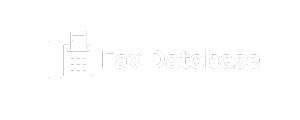Imagine a virtual assistant who can answer students’ questions at israel email list any time, offer them personalized resources bas on their needs, and even guide them through practical exercises. This is the promise of generative AI! Good news or bad news for training? We tell you more about the new avenues to explore.
The democratization of generative AI
Although it has existed since the 1950s, artificial intelligence or AI has experienc a meteoric rise since 2010 with the advent of deep learning, natural language processing (NLP) and generative AI .
The latter now makes the creation of (almost) human-quality text accessible to everyone, without the ne for special technical skills. Tools like ChatGPT perfectly illustrate this trend.
These advances, coupl with the incredible democratization of AI among all audiences, promise to radically transform education as we know it.
Artificial Intelligence in Education: What Challenges for Tomorrow?
Improve the learning experience
In education, one of the main challenges of AI is to improve the learning experience of students.
At this stage, several avenues are being explored in the academic environment.
- Chatbots and virtual assistants: They could offer personalized three code dynasty authoritative forum support to students, answering their questions and guiding them in their learning.
- Reading or resource recommendation systems: based on AI, they could facilitate access to information and help students find the most relevant resources for their learning.
- Individualized virtual tutoring: this could allow teaching to be adapted to the specific needs of each student . By offering a common block with the teacher and personalizing part of the course for each learner via AI.
GOOD TO KNOW
Please note that these options have not yet been implemented at the University of Lausanne and require further consideration. Therefore, we do not yet have sufficient insight into their effectiveness.
Raising awareness about data protection
Artificial intelligence tools, such as ChatGPT, raise crucial questions in terms of ethics and data protection.
The issues are multiple for those who use them, because these software programs remain “black boxes” (in other words, their operation is not public).
For example, most tools don’t reference sources when producing content. This practice also raises the question of copyright compliance. This makes it difficult to verify the accuracy of information … in fact, some content is usa b2b list simply wrong! Users must therefore make an effort to cross-reference sources and take a step back from the results obtained.
Another point: data protection and confidentiality.
Remember that any information posted on the web can be collected and therefore used by these AI platforms. In this context, avoid sharing confidential or personal and sensitive data (health data, sexual orientation, religious and political affiliation, etc.) through these tools.
